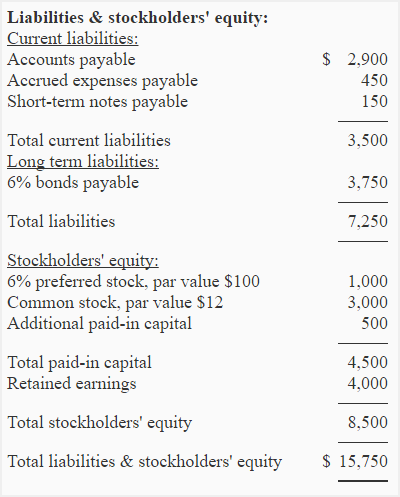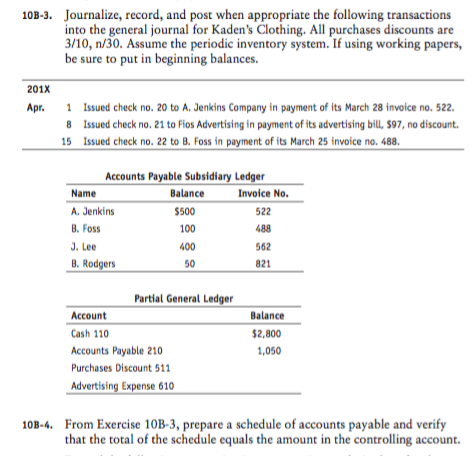Content

Update the loan balance to reflect the first payment and repeat this process for every month until you reach a principal balance of zero. For intangible assets, knowing the exact starting cost isn’t always easy. You may need a small business accountant or legal professional to help you. Don’t assume all loan details are included in a standard https://online-accounting.net/ schedule. Some amortization tables show additional details about a loan, including fees such as closing costs and cumulative interest , but if you don’t see these details, ask your lender. These are often five-year amortized loans that you pay down with a fixed monthly payment.
GOLDEN MATRIX GROUP, INC. Management’s Discussion and Analysis of Financial Condition and Results of Operations. (form 10-K) – Marketscreener.com
GOLDEN MATRIX GROUP, INC. Management’s Discussion and Analysis of Financial Condition and Results of Operations. (form 10-K).
Posted: Mon, 30 Jan 2023 11:10:08 GMT [source]
This is the total payment amount less the amount of interest expense for this period. As the outstanding loan balance decreases over time, less interest will be charged, so the value of this column should increase over time. For example, if your annual interest rate is 3%, then your monthly interest rate will be 0.25% (0.03 annual interest rate ÷ 12 months).
What is mortgage amortization?
Sometimes it’s helpful to see the numbers instead of reading about the process. The table below is known as an “amortization table” (or “amortization schedule”). It demonstrates how each payment affects the loan, how much you pay in interest, and how much you owe on the loan at any given time. This amortization schedule is for the beginning and end of an auto loan. Your last loan payment will pay off the final amount remaining on your debt. For example, after exactly 30 years , you’ll pay off a 30-year mortgage.

Still, the asset needs to be accounted for on the company’s balance sheet. Interest costs are always highest at the beginning because the outstanding balance or principle outstanding is at its largest amount. It also serves as an incentive for the loan recipient to get the loan paid off in full. As time progresses, more of each payment made goes toward the principal balance of the loan, meaning less and less goes toward interest.
Amortization of Loans
Investopedia requires writers to use primary sources to support their work. These include white papers, government data, original reporting, and interviews with industry experts. We also reference original research from other reputable publishers where appropriate.
- As your loan approaches maturity, a larger share of each payment goes to paying off the principal.
- During the introductory period they can be interest-only payments, like discussed above.
- The term amortization is used in both accounting and in lending with completely different definitions and uses.
- These are often five-year amortized loans that you pay down with a fixed monthly payment.
- As time goes on, more and more of each payment goes toward your principal, and you pay proportionately less in interest each month.
- Many balloon mortgages include principal and interest in monthly payments, but the borrower must always be prepared to deal with the lump sum payment, usually at the end of the term of the loan.
For more information about or to do calculations involving depreciation, please visit the Depreciation Calculator. Almost all intangible assets are amortized over their useful life using the straight-line method. This means the same amount of amortization expense is recognized each year. On the other hand, there are several depreciation methods a company can choose from. These options differentiate the amount of depreciation expense a company may recognize in a given year, yielding different net income calculations based on the option chosen.
How payments affect principal, interest and pay off
A fixed-rate mortgage is a great option for those who plan to stay in their home for a while. These types of loans have a fixed interest rate throughout the duration of the loan. The amount a borrower pays may fluctuate based on local tax and insurance rates, but for budgeting purposes, fixed-rate mortgages provide a predictable monthly payment. A home amortization schedule also clarifies how making added payments toward principal can have a significant impact on the total cost of your loan. Because interest owed is calculated on the loan balance, extra payments towards your principal lower this balance at a faster rate and can considerably decrease the amount of interest you owe. Although your interest rate stays the same with a fixed-rate loan, paying a bit extra each month can ultimately make the loan cheaper and help you pay off the balance faster.
When amortizing loans, a gradually escalating portion of the monthly debt payment is applied to the principal. When amortizing intangible assets, amortization is similar to depreciation where a fixed percentage of an asset’s book value is reduced each month. This technique is used to reflect how the benefit of an asset is received by a company over time. Each month, your mortgage payment goes towards paying off the amount you borrowed, plus interest, in addition to homeowners insurance and property taxes. Over the course of the loan term, the portion that you pay towards principal and interest will vary according to an amortization schedule.
What is loan amortization?
In this example, at about year five, $982 of your monthly payment goes toward principal and $1,153 to interest. So far you’ve paid $54,661 toward principal, leaving Amortization principal balance owed at $445,339 and $73,444 in paid interest. By year 20, your principal paid is $279,939 with $220,059 remaining, and interest paid of $232,479.
Why do we amortize assets?
Amortization is an accounting method for spreading out the costs for the use of a long-term asset over the expected period the long-term asset will provide value. Amortization expenses account for the cost of long-term assets (like computers and vehicles) over the lifetime of their use.
